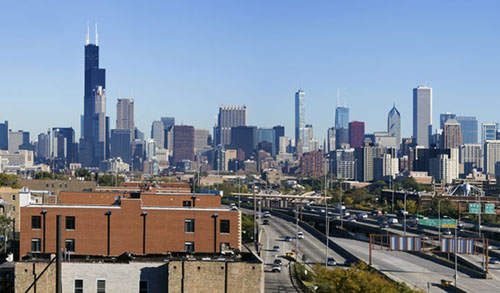by WorldTribune Staff, June 25, 2019
The Chicago neighborhoods of Streeterville and Englewood are only eight miles apart. In wealthy Streeterville, life expectancy is 90-years-old. In poverty-stricken Englewood, it’s 60.
The two neighborhoods in the Democratic Party bastion have the most divergent life expectancy of any in the U.S. that share the boundaries of a city, according to a recent analysis from the City Health Dashboard, published by the department of population health at New York University.

“There’s a concept that is increasingly being understood, that your zip code has as much to do with your health as your genetic code,” Dr. Marc Gourevitch, chair of the NYU department and the principal architect of the health dashboard, told The Guardian in a report published on June 23.
“Another way to look at that is that your zip code shouldn’t determine whether you get to see your grandkids. And at some level, that’s how I see and feel about these kinds of data. It’s shocking,” Gourevitch said.
Forty percent of the 12.7 million residents of Illinois live in Cook County. The broader Chicago metropolitan area consists of 9.5 million people. Without the Chicagoland area, Illinois would have fewer people than Connecticut.
Democrats control both chambers of the General Assembly and the governor’s office, and most of them are from Chicagoland — including 62 of the 74 Democrats in the House. The rest of Illinois is largely agricultural and conservative. Chicago has not elected a Republican mayor since 1927.
The median income in predominantly white Streeterville is nearly $100,000 a year, according to the U.S. census. In mostly-black Englewood, it’s $25,000. More than 80 percent of Streeterville residents have a college degree, compared with 8.2 percent in Englewood.
Englewood has a reputation of being one of Chicago’s most violent neighborhoods. According to the Chicago Tribune, between 2000 and 2017 there were more than 4,800 shootings there.
Erin Vogel, co-executive director of I Grow Chicago, an Englewood-based community nonprofit, says 100 percent of the children the group works with have lost someone they know to gun violence and have heard gunshots while in their home.
“93 percent of them have literally seen a shooting with their own eyes,” Vogel said. “There’s a young man who I work with who just turned 15, and in his 13th year of life, five of his friends were murdered. He saw two of them.”
Michelle Rashad, a 27-year-old who grew up in Englewood, told the Guardian how, during her freshman year in high school, a 14-year-old friend was killed. “A stray bullet went straight through the window while she was getting ready for school. And I have to walk past that block. We’re constantly having to walk past these traumatic situations. You can literally look at the sidewalk where you’ve once seen blood or people bleed out, and you have to go to school, you have to go to work.”
Not only is Englewood one of the most violent of Chicago’s neighborhoods, but for decades it had one of the highest rates of residential lead contamination in the country. Research has shown that lead poisoning in children is associated with dramatic spikes in impulsiveness and aggression.
“Irreversible brain damage just because of where you live, and you’re too poor to go anywhere else? It’s not fair. You’re cheating kids,” said Rashad, now executive director of Imagine Englewood If, a community group founded largely to draw attention to the lead crisis.
Intelligence Brief __________ Replace The Media
